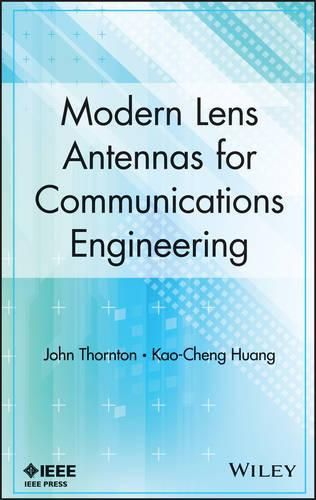Readings Newsletter
Become a Readings Member to make your shopping experience even easier.
Sign in or sign up for free!
You’re not far away from qualifying for FREE standard shipping within Australia
You’ve qualified for FREE standard shipping within Australia
The cart is loading…






The aim of this book is to present the modern design principles and analysis of lens antennas. It gives graduates and RF/Microwave professionals the design insights in order to make full use of lens antennas. Why do we want to write a book in lens antennas? Because this topic has not been thoroughly publicized, its importance is underestimated. As antennas play a key role in communication systems, recent development in wireless communications would indeed benefit from the characteristics of lens antennas: low profile, and low cost etc. The major advantages of lens antennas are narrow beamwidth, high gain, low sidelobes and low noise temperature. Their structures can be more compact and weigh less than horn antennas and parabolic antennas. Lens antennas with their quasi-optical characteristics, also have low loss, particularly at near millimeter and submillimeter wavelengths where they have particular advantages. This book systematically conducts advanced and up-to-date treatment of lens antennas.
$9.00 standard shipping within Australia
FREE standard shipping within Australia for orders over $100.00
Express & International shipping calculated at checkout
The aim of this book is to present the modern design principles and analysis of lens antennas. It gives graduates and RF/Microwave professionals the design insights in order to make full use of lens antennas. Why do we want to write a book in lens antennas? Because this topic has not been thoroughly publicized, its importance is underestimated. As antennas play a key role in communication systems, recent development in wireless communications would indeed benefit from the characteristics of lens antennas: low profile, and low cost etc. The major advantages of lens antennas are narrow beamwidth, high gain, low sidelobes and low noise temperature. Their structures can be more compact and weigh less than horn antennas and parabolic antennas. Lens antennas with their quasi-optical characteristics, also have low loss, particularly at near millimeter and submillimeter wavelengths where they have particular advantages. This book systematically conducts advanced and up-to-date treatment of lens antennas.